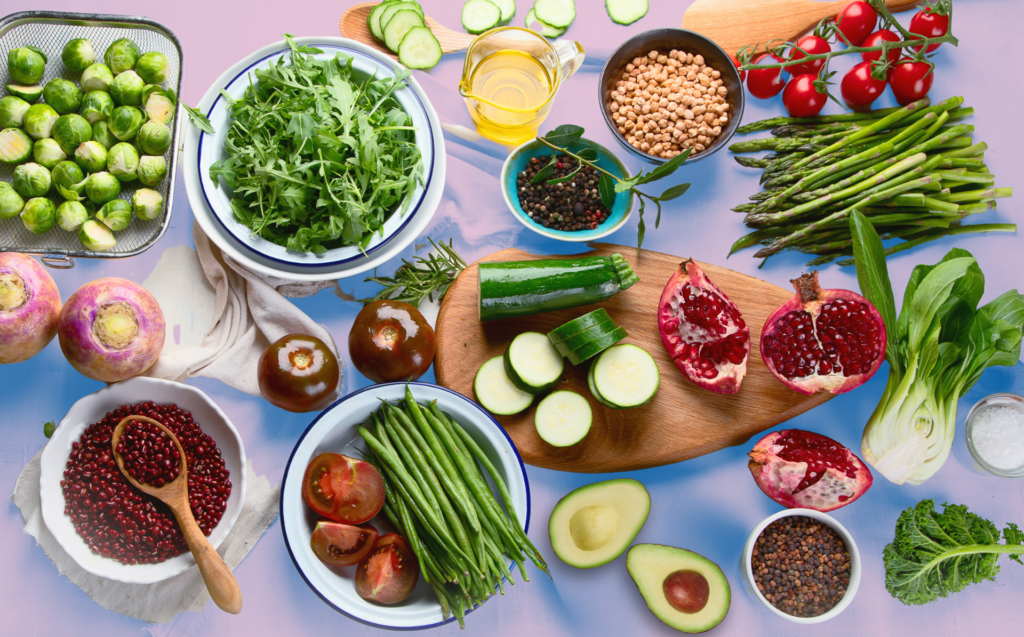
Who said healthy food had to be sin sazón? Through all the foods and flavors that come from Latin America, there are so many that allow us to live healthy and deliciously without sacrificing our sazón. Registered Dietitian Nutritionist Anna Rios walks us through debunking some of the common myths that have demonized our native foods, and gives us some balanced meal recipes to eat healthy, rico, and rooted in our culture.
The days of thinking that Latin American food is unhealthy are over. Although it is slowly changing, there was never much representation of our food in the health industry. When visiting the doctor’s office or watching advertisements for healthy food, we mainly see salads, plain fruit, steamed vegetables, y comida sin sazón. I remember being a teenager thinking that I had to eat boring salads and foods outside my culture for them to be considered “healthy.” Now, as a Mexican-American dietitian, I can say with confidence that Latin American cuisine includes some of the most nourishing foods in the world.
Let’s debunk the theory that Latin-American foods aren’t healthy
Could it be that our food is just so delicious that it’s hard to believe it can be part of a healthy diet? There are lots of theories about why our food started getting demonized, but today I want to bust these myths by showing you how to enjoy tu comida favorita every day in a balanced way.
Let’s start with the infamous tortilla! Tortillas have been getting a bad ‘wrap’ (pun intended) for as long as I can remember. During an initial appointment with me, some of my patients will proudly tell me, “I stopped eating tortillas” or “I swapped out tortillas for whole grain bread.” As if our bodies could tell the difference between 30 grams of whole-grain bread and 30 grams of corn tortillas. The truth is that our bodies need carbohydrates, especially complex carbohydrates that come from whole grains like corn tortillas and whole-grain bread.
Tortillas can be part of a balanced diet and can be eaten daily. The key to making a nourishing meal is learning how to make it balanced. A balanced meal contains protein, carbohydrates, good (unsaturated) fats, and lots of vegetables. Here are a few examples of nourishing and balanced meals that include tortillas:
Frijoles de la olla:
Carbohydrate: 3 corn tortillas
Protein: 1 cup frijoles de la olla
Veggies: 1 cup of pico de gallo with shredded cabbage
Good fats: Avocado
Caldo de pollo:
Carbohydrate: 3 corn tortillas
Protein: 1-2 pieces of chicken
Veggies: Lots of chayote, carrots, calabacita
Good fats: Avocado (avocados contain 6 grams of naturally good fat per one-third of a medium avocado!)
How to balance your diet with foods from our cultura
The goal is to balance our meals with each food group and try to add as many vegetables and even fruits as we can. It’s never too early or too late to eat healthier. Recommendations to eat more fruits and vegetables (like avocados) are consistent across the lifespan, from childhood to older adulthood. Many of our cultural dishes are already full of nutrients and contain vegetables and fruit. Some of these dishes include calabacitas a la Mexicana, arepas, ceviche, pepian, caldo de pollo, platanos fritos, chiles rellenos, ensalada de nopal, verdolagas, pepino y jícama con chile y limón, and many more!
Some dishes aren’t originally balanced, such as sopa de fideo. However, we can add vegetables, fruit and protein to make it a balanced meal. I love adding garbanzos for protein, carrots for extra vegetables, and avocado for good fats. Plus, avocados are a unique and healthy fruit because they contain unsaturated fat — and can act as a nutrient booster by helping increase the absorption of fat-soluble nutrients like vitamins A, D, E and K. With help from fresh avocados, you can up-level dishes and start new healthy traditions that can be passed down for generations.
How research supports eating avocados among the Latine community
In fact, a clinical trial investigated how regularly eating fresh avocados and learning about nutrition may support healthy eating patterns and well-being. 72 Latin American (97% Mexican) families received one of two levels of avocado allotment plus nutrition education based upon MyPlate for six months. Families eating 3 (720 extra calories) or 14 (3,360 extra calories) avocados per week experienced no changes in body weight and reported a reduction in calorie, carbohydrate, saturated fat, and sodium intake compared to those with low avocado intake. (Pacheco, 2021) The Avocado Nutrition Center funded the study. Though the findings cannot be generalized due to study limitations, including drawbacks of all validated food frequency questionnaires, this research supports the inclusion of fresh avocados in nutrition education to support weight management while reducing the overconsumption of saturated fat and sodium for Latin American families.
Latin American food is delicious, nourishing, and can always be made in a balanced way. Enjoying the meals we eat is important and so is keeping our culture alive, so always feel proud to bring your cultura to the table.
Click here for a free PDF download from Aguacates – Love One Today® with a few helpful resources including more on how you and your family can make nutritious meals with fresh avocados.

About the Author
Anna Rios
Anna is a registered dietitian nutritionist and food blogger. She works with the underserved Latine community in northern California, while also creating nourishing plant-based Mexican recipes. Her goal is to show her community that it is possible to eat a healthy diet while still honoring our culture and enjoying our food. She focuses on intuitive and mindful eating as well as a healthy relationship with food because mental health and nutrition are connected.












